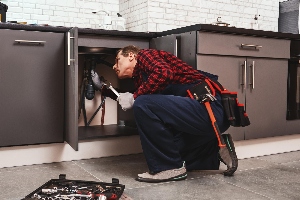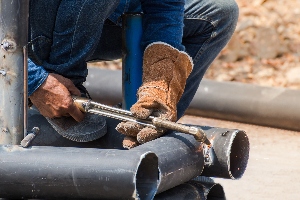Maintaining the health of your drainage system is crucial to the integrity of your property and the well-being of its occupants. A well-functioning drainage system is essential for the proper disposal of wastewater and prevention of water damage. Understand that the drainage in place, whether it's within your residence or part of a larger infrastructure, is designed to manage water flow effectively during a variety of conditions. Regular assessment and maintenance can prevent costly repairs and ensure that your drainage system operates efficiently.
Advances in technology now allow for detailed tracking and analysis of your drainage condition. Through preventive maintenance, you can anticipate potential issues before they develop into serious problems. This involves not only routine physical inspections of pipes and outlets but also leveraging software that provides a comprehensive view of the system's performance. With proper care, your drainage system can handle the task of managing water disposal without interruption, thereby safeguarding your property from the adverse effects of water buildup and ensuring continuity in waste management.
Recognize the direct link between effective drainage systems and public health. In places with significant rainfall or in areas prone to flooding, maintaining your system becomes even more vital. By staying informed about how your local environment impacts your drainage system, you can take appropriate steps to adapt your maintenance practices accordingly. This ensures your system remains robust against weather-related stress and contributes to a healthier living environment by mitigating flood risks and maintaining sanitation standards.
Fundamentals of Drainage Systems
Understanding the underlying principles of drainage is essential for maintaining system health. Grasping the science of hydrology, the principles of fluid mechanics, and the various components will equip you with the knowledge needed for assessing and managing drainage systems effectively.
Hydrology and Drainage Basin Dynamics
Hydrology is the study of the movement, distribution, and quality of water on Earth. Drainage basins are areas of land where precipitation collects and drains off into a common outlet, such as a river, bay, or other body of water. As a critical aspect of drainage systems, the dynamics of a drainage basin depend on the topography, size, and water cycle within the basin. Rainfall and melting snow contribute to surface runoff, infiltrating the soil, or recharging the groundwater. Understanding the flow within your drainage basin is key to determining how water interacts with your drainage system.
Principles of Fluid Mechanics in Drainage
Fluid mechanics is a branch of physics that deals with the behavior of fluids (liquids and gases) and their forces. In drainage, this involves the study of water flow through pipes, channels, and other structures. Two core principles you should be aware of are:
- Laminar and Turbulent Flow: Laminar flow is smooth and orderly, while turbulent flow is chaotic and occurs at higher velocities. The type of flow affects the efficiency of your drainage system.
- Bernoulli’s Principle: It states that an increase in the speed of fluid occurs simultaneously with a decrease in pressure or a decrease in the fluid's potential energy. This principle is instrumental in designing systems for optimal water movement.
Drainage System Components and Structures
A well-functioning drainage system is composed of a series of components and structures:
- Pipes and Conduits: These are the channels through which water travels. They must be sized appropriately for the expected water volume and flow rate.
- Catch Basins and Manholes: Catch basins collect sediment and allow water to filter down, while manholes provide access to the system for maintenance.
- Outlets: Structures such as culverts and storm sewers, where water exits the system, often leading to natural watercourses.
Each part of the drainage infrastructure plays a vital role in effective water management and prevention of issues like waterlogging and structural damage. Regular inspection and maintenance of these components ensure system longevity and functionality.
Design and Planning of Drainage Systems
When you're preparing to design a drainage system, it is crucial to focus on specific parameters and guidelines, select appropriate materials and construction techniques, and understand the principles of Sustainable Drainage Systems (SuDS).
Drainage Design Parameters and Guidelines
Your design should start with a clear set of parameters and guidelines. Key factors include the expected storm frequency, water flow rates, and acceptable spreading limits for roads. To ensure safety and functionality, your system must comply with stringent requirements—which may involve using a 10-year storm frequency or the specific minimums set by local regulations.
- Minimum storm frequency: 10-year
- Acceptable spread for roads: ½ driving lane
- Local regulation compliance: Mandatory
Materials and Construction Techniques
Choosing the right materials and adhering to proven construction techniques are essential for a durable drainage system. Materials like PVC, concrete, and HDPE are commonly used for their longevity and performance. When constructing the drainage system, ensure that joints are properly sealed and that gradients are sufficient for effective water transport.
- PVC: Versatile, affordable
- Concrete: Durable, robust
- HDPE: Flexible, resistant to impact
Sustainable Drainage System (SuDS) Principles
SuDS are designed to mimic natural drainage processes and manage rainfall close to where it falls. Your drainage system should promote water infiltration, provide quality treatment, and ensure that runoff mimics the natural water cycle. By incorporating features like swales, green roofs, and permeable paving, you simultaneously address water quantity and quality, promoting sustainability and resilience.
- Infiltration techniques: Swales, permeable pavements
- Water quality treatment: Bioretention facilities
- Natural water cycle emulation: Green roofs, rainwater harvesting
Maintenance of Drainage Systems
Maintaining your drainage system is crucial for preventing water damage and ensuring the health of your living environment. Regular inspections, timely preventive maintenance, and understanding repair methods can save you from costly interventions in the future.
Inspection and Monitoring Techniques
To keep your drainage system in optimal condition, you should conduct routine inspections. Use the following techniques:
- Visual Inspections: Regularly check gutters, downspouts, and surface drains for blockages or signs of overflow.
- CCTV Inspection: Employ closed-circuit television cameras to inspect the interior of underground pipes for cracks, blockages, or misalignments.
- Flow Monitoring: Measure the flow rate in pipes to detect abnormalities that may suggest leaks or blockages.
Preventive Maintenance Strategies
Implement these preventive maintenance strategies to reduce the likelihood of drainage system failures:
- Cleaning Schedule: Establish a regular cleaning schedule for all components of your drainage system to prevent silt and debris accumulation.
- Vegetation Control: Trim back roots and plants that could compromise the pipe integrity.
- Flush Systems: Perform periodic flushing of pipes to clear out any buildup.
Rehabilitation and Repair Methods
When issues arise, it's important to address them promptly using these repair methods:
- Pipe Relining: Apply a new lining to existing pipes to seal fractures and extend pipe life without excavation.
- Patch Repairs: For localized damage, use patch liners to repair specific sections of the pipe.
- Replacement: In cases of severe damage, replace compromised portions of your drainage system to restore its functionality.
Drainage System Health Assessment
Evaluating the health of your drainage system is vital to ensure its effectiveness and longevity. It involves the use of various tools and the interpretation of performance data to diagnose and preemptively address issues.
Assessment Tools and Methodologies
To assess the health of your drainage system, multiple tools and methodologies are employed. These can include:
- Visual Inspections: Conducting regular visual check-ups to look for visible signs of wear, obstructions, and damage.
- CCTV Surveys: Utilizing closed-circuit television for in-depth inspections of internal conditions.
- Hydrological Models: Applying advanced models to simulate water movement and identify potential overflow or flooding issues.
A proper assessment typically combines the Analytic Hierarchy Process (AHP) and entropy weighting methods to establish a comprehensive health evaluation index. This approach allows for the effective fusion of qualitative observations with quantitative data, providing a robust framework for system health evaluation.
Interpreting System Performance Data
Your ability to interpret system performance data directly impacts the management of your drainage system. Key performance indicators include:
- Flow Rates: Measures how well water is transported through the system.
- Sediment Build-Up: Indicates potential blockages.
- Water Quality: Reflects the effectiveness of your sewage treatment processes.
Accurately interpreting these indicators helps in determining the system's current state and forecasting future performance, allowing for timely interventions.
Identification of Common Issues and Failures
Recognizing common issues and failures is crucial for maintaining a healthy drainage system. Some typical problems you might encounter are:
- Blockages: Caused by sediment, debris, or tree roots.
- Structural Damage: Such as cracks or collapses due to age or external pressures.
- Overflow and Backups: Often a result of excessive rainfall or poor maintenance.
By familiarizing yourself with these common challenges, you can effectively strategize for regular maintenance and prevent system breakdowns.
Regulatory Framework and Environmental Considerations
In managing urban drainage systems, it's essential to adhere to regulatory frameworks that ensure environmental protection and sustainability. These regulations are in place to maintain water quality and to safeguard ecosystems.
Legislation and Compliance
You must navigate a complex landscape of regulations designed to ensure the development and maintenance of sustainable urban drainage systems (SUDS). The compliance with such legislation is mandatory, and violations can result in severe penalties. For example, SUDS regulations may require specific design standards to minimize environmental impact and to support public health objectives.
Impact on Water Quality and Ecosystems
The quality of water in natural bodies and the health of local ecosystems are directly influenced by urban drainage systems. Poorly managed systems can lead to contamination and the disruption of aquatic habitats. You must consider the ecological implications of drainage operations, which include the potential for stormwater to carry pollutants and the alteration of natural water flow.
Best Management Practices for Environmental Protection
To protect the environment, you should implement best management practices (BMPs) such as:
- Utilizing green infrastructure solutions like rain gardens or permeable pavements to facilitate the natural infiltration of water.
- Ensuring regular maintenance to prevent system malfunction that could result in untreated stormwater discharge.
- Integrating hybrid systems combining gray and green infrastructure elements to enhance resilience and sustainability.
Book your drain cleaning service with a trusted, reputable plumber like One Call Plumbing.












